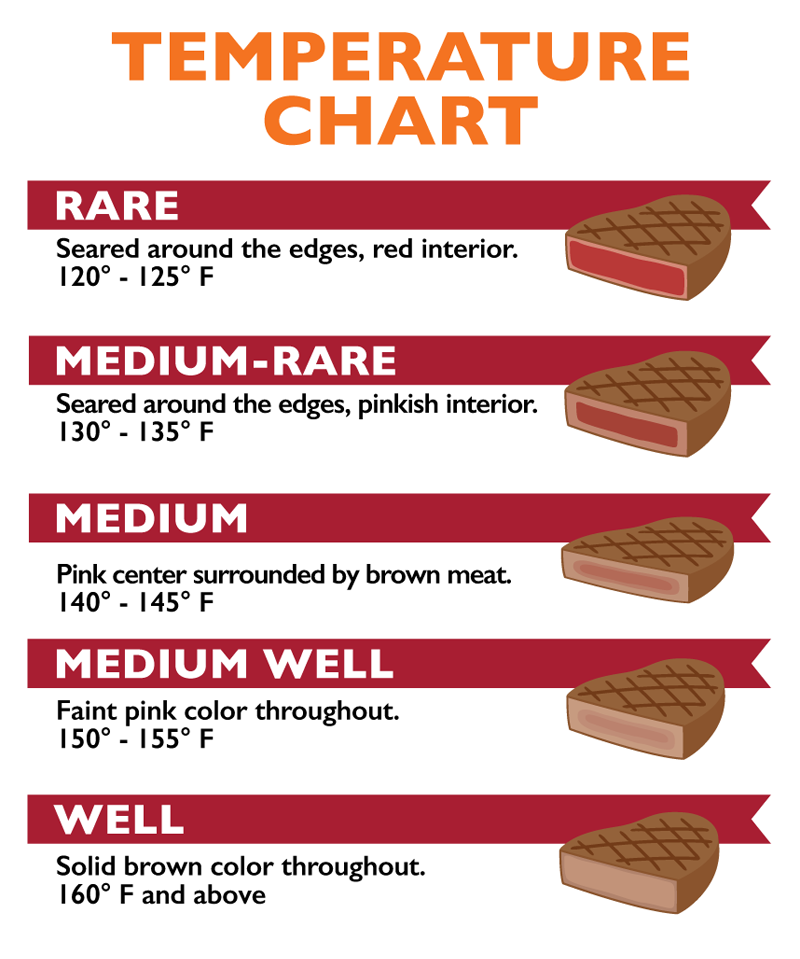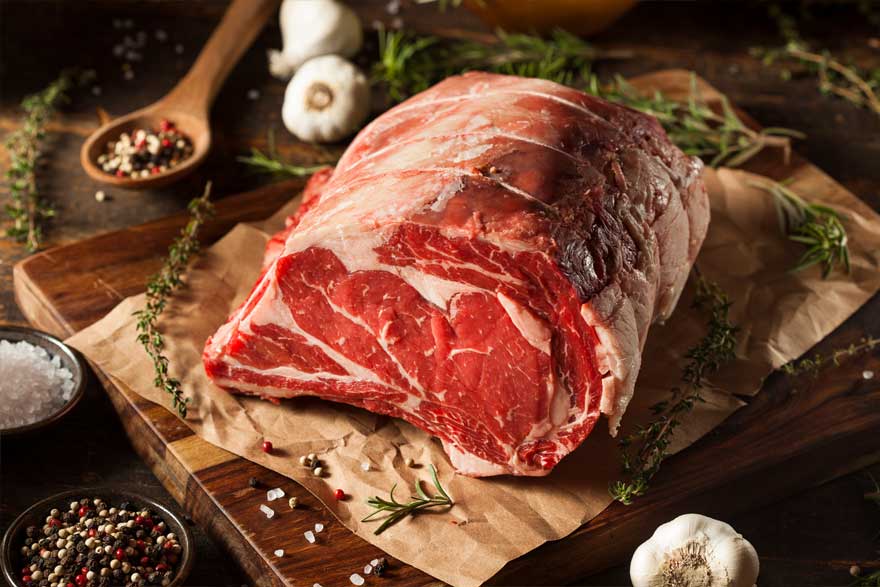You can buy with confidence knowing that our Meat Department sources only the highest quality meats from local farms who follow strict organic standards and comply with humane animal treatment. Our meat never contains antibiotics, hormones, or artificial ingredients. Learn more about our local suppliers by visiting We Love Local. Read on for more information about different meat cuts and some preparation suggestions. Be sure to check out our Marinade and Rub recipes.

Loin
The loin is best cooked with dry heat as too much moisture will make the meat tough. Recommended cooking methods include a broiler, a grill, or a pan. The short loin sections can be cooked in thick or thin cuts and will remain fairly tender from rare to well-done. The sirloin section is best cooked on lower temperatures and cooked rarer. It will toughen when cooked well-done. Sirloins are also a good option for marinating.
Brisket
The brisket is best cooked at lower temperatures for a longer time. It is a tougher piece of meat and fares well with marinade, dry rubs, brining, and a moist cooking environment. A brisket can marinade for as long as 24 hours before cooking. Brining will create moisture pockets within the muscle. Briskets are also a good choice for low temperature smoking.
Round
Ground round can be pan fried or grilled. Round roasts can be cooked in moist heat (braising) or dry heat (roasted). Either way these roasts prefer longer cooking times at lower temperatures. The London broil is at it’s best when it is marinated and grilled. Steaks from the round are all best when marinated and then grilled or sautéed. Alternatively steaks can be braised in a flavorful liquid. When marinating these cuts, be sure to keep to short marinating times (~20 minutes) at room temperature.
Short Plate
Both the skirt steak and the short ribs have a membrane, it is important to remove this before cooking so that direct heat can penetrate the meat, otherwise it will become chewy and tough. Skirt steaks like dry hot heat in a pan or on the grill. Searing is essential to this steak and it should not be cooked well-done. Once cooked, slice it across the grain thinly. Short ribs prefer a moist low heat for a longer time. They pair well with high flavor braising liquids, like a dark beer.
Chuck
Chuck roasts are best made in a moist cooking environment at low temperatures over a long period of time. These can be broiled, braised, or cooked in a crock pot. Chuck steaks are a bit tougher and do well to be marinated or tenderized. They should be kept moist throughout grilling (or any short methods of cooking). For short cooking at higher temperatures a thinner cut steak will do better. Go for a thicker cut for stewing or cooking for longer lengths of time.
Shank
The shank is best when cooked with the bone in it in a moist cooking environment. It is also best cooked at low temperatures over a long time period. Collagen will be released while it is cooking which can be used to make a rich creamy sauce, making this cut great for making soups and broths.
Flank
Flank cuts do well with a marinade, usually no more than an hour. Preferred cooking methods for flank cuts are grilling, broiling, or pan searing. Flanks also do well when braised. Once cooked, slice it across the grain thinly.
Rib
Rib cuts have a lot of versatility. Steaks from the rib portion do well with dry heat sautéed, broiled, or grilled. They are tender, even when cooked to well-done because of high amounts of marbling (small pockets of fat within the muscle). Look for a well marbled steak when purchasing. Roasts also will cook well in dry heat. They should be patted dry and seasoned, then roasted in an oven. Shy away from braising roasts from the rib as this method will likely toughen the meat.




Leave A Comment